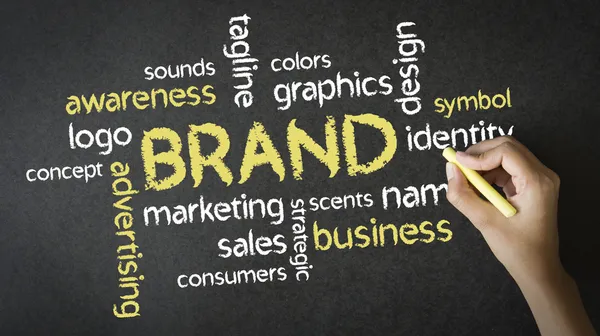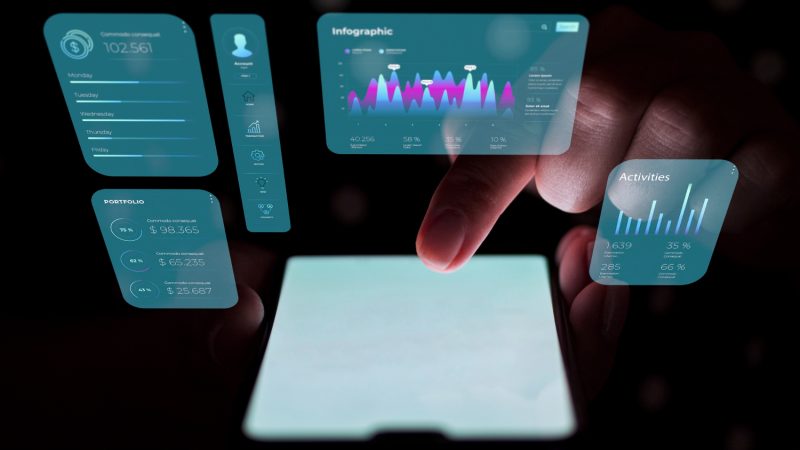Expert Tips for Establishing a Solid Company Brand for 2023

Do you choose Reese’s over a lower-priced generic product for your chocolate-loving friend? Reese’s is a no-brainer for me because of its higher perceived value as a consumer brand.
Many ecommerce entrepreneurs don’t know how to build a brand that attracts customers. A brand is the heart and soul of your company, influencing audience perception and driving advocates to your brand.
The right brand is the result of numerous interrelated factors, all designed to change how people think and feel about your business.
In this article, we’ll show you how to create a brand that keeps people coming back for more according to the experts.
Brands: What Are They?
A brand is the culmination of all the things you use to differentiate your company and gain the attention of a particular target market. Not only does this include visual assets, such as your website design, your logo, your brand colors, and business cards, but also your tone of voice, your company mission, and values.
Let’s take Apple as an example. If something contributes to your customers’ perceptions of your organization, it’s likely a part of your brand. Apple sells computers and technology, just like many other brands. What is it about the company that makes customers line up around the block for their latest products? It’s the brand.
The Apple brand stands out with its minimalist approach to aesthetics, from its crisp white stores to its ultra-sleek website.
Additionally, Apple builds its brand by:
- To make customer lives easier, we are constantly innovating and releasing new products.
- Highlighting its creativity with phrases such as “Think Different”
- Developing influential marketing campaigns in collaboration with market leaders
- Apple’s forward-thinking and creative nature is what attracts customers.
Checklist for Branding Your Business: 8 Steps
Let’s explore how to build a brand from scratch now that you know what it is.
- Identify Your Audience
It’s important to know whom you’re trying to reach when building a brand.
Ivan Lovre Marusic of RPG Overload says “Try to be specific with your choice of customer and think about what kind of products you will be selling and who they’ll serve. For example, instead of targeting “dog owners,” a pet accessories company can target dog owners with younger canines or dog show trainers. You will have less competition if you choose a specific niche.”
By understanding your audience, you can choose a brand voice, design, and even a marketing strategy that will appeal to them.
- Existing customers: Do you have any existing customers? What is their age range, where are they from, and what do they love about your company?
- Is there an underserved segment of the market you can help with your products based on what other companies like you are targeting?
- Create buyer personas based on your ideal customer’s age, gender, demographics, likes, dislikes, and behaviors (such as how they shop online).
Adding to your customer personas as you go will help to ensure that they are accurate as you build your ecommerce brand.
- Develop Your Brand Position
According to Smithe Sodine of Smithy Home Couture, “you can’t be a high-end luxury fashion company and a budget-friendly business at the same time. You need to decide where to enter the market.
It is easiest to create a positioning statement, which consists of one or two lines that help define who you are and what you do. An example of a brand position statement would be: “We are a company that sells unique hand-made home accessories in California.”
In the example above, the main differentiator is the “hand-made” aspect of the products, which makes the brand unique. You can create marketing campaigns and branded content that speak to your target audience in the right voice when you know your position and selling points.
For instance, a company selling hand-made products is more likely to have a warm, welcoming voice. High-end luxury products, on the other hand, require a more artistic and sophisticated tone of voice.”
- Pick a Business Name
When it comes to choosing a brand name, it’s all about knowing your target audience and how you want to position your brand.
As Alex Federo from FTW Concrete Contractors says, “One of the most important defining features of your brand is your name. The right name should convey everything you want your customers to know about you.”
The key to success is picking a word that conveys the right emotions or ideas to your audience, such as “Vision Clothing,” if you’re a clothing business.
Other kinds of names include:
- Names that describe the business, such as “Florist.”
- Names that inspire emotional responses, such as “Innocent Drinks.”.
- Names chosen based on where the business originated or who made it, such as “Ford.”
- A compound name is a combination of two or more words, such as “Facebook” or “FedEx.”
- Acronyms and initials: Shorter versions of longer names, such as “BMW.”
Before deciding on a brand name, do some research to see what’s available as it will also define your online store’s URL/domain. For some brand name ideas, use these business name generators, or follow our guide to choosing the perfect name for your store.
- Your brand’s story should be outlined
According to Sean Philips of Ship Tracking, “All businesses need a purpose (beyond simply making money). Consider why you established a business and how your products can positively impact people.”
Eyewear brand Warby Parker, for instance, delivers high-quality eyeglasses at an affordable price to customers worldwide.
Its website tells the story of how it found a new way to serve customers by avoiding conventional channels. By interacting with customers directly online, it was able to offer good quality eyewear at a fraction of the price.
Warby Parker’s narrative emphasizes its commitment to affordable fashion while positioning itself as a customer-first brand.
You can generate respect for your brand by telling a good story about your business.
- Establish Your Brand’s Look
“Your brand’s look means deciding how your customers will be able to identify your company at a glance. What kind of packaging will you use for your products? Your customers will be able to identify your parcels when they order items from your ecommerce store. When they browse your website, what will they see?” says Harding Mashman of Swipe Tech.
Your brand look should include the following elements:
- All of your branded assets, including your website, email, and product packaging, will be based on a few shades of your brand colors. A color can have a psychological impact on customers, such as red being bold and passionate, while blue is trustworthy and relaxing.
- Choosing the right fonts can have a huge impact on how your customers perceive your brand. Sans-serif fonts are often more modern and friendly, while serif fonts are more traditional.
- What kinds of images, illustrations, and pictures do you use on your products, website, and advertisements?
Develop a set of visual guidelines to guide your team and any designers you work with once you have the various elements you need to build your brand image.
- Design a logo
Another major element in starting your own brand is your logo. Along with your name, your logo is one of the first things that your customers will recognize, according to Wilfrid Becker of Infinity Supplies.
Logos should be easy to understand and meaningful. In order to ensure your logo has the right impact, you should work with a professional designer to capture your visual essence. Apple’s iconic apple image with a bite out does not need any explanation.
You can consider the following types of logos with the help of a designer:
- The Starbucks logo is a great example of a brand emblem. Emblems have a sophisticated and traditional appearance.
- Often, mascot logos are designed around a specific character, like Wendy’s. They help humanize an organization.
- IBM’s logo is a great example of how letter marks transform acronym names into visual logos.
- An icon logo uses a simple image to identify your brand, like the Twitter bird.
- Using a stylistic font, wordmarks turn your brand name into a logo that will make your name more memorable.
- As an example, the Taco Bell logo combines the name of the company with an image.
- Write Your Slogan
A slogan is an optional part of the brand-building process, but it’s one that’s worth considering if you want to improve your brand’s reach and recognition.
Depending on what you want to accomplish, you will decide what type of slogan you should use. Red Bull uses the metaphor “Red Bull gives you wings” to tell people they can boost their energy with the drink. Nike shows off its motivational brand attitude by using the phrase “Just do it.” As well as telling your audience something about your business, the best slogan will give you an opportunity to add your own unique mark to the company.
Remember to use your unique brand voice when creating a slogan for your brand.
- Integrate Your Brand Everywhere
It’s time to share your brand now that you have built it.
The easiest way to make your brand memorable is to make sure everyone on your team knows what it should look like and sound like. Start by creating a style guide for your employees and contractors.
Consider how you can draw attention to your brand across various channels. For instance, it should be evident on:
- Make sure your ecommerce store theme reflects your brand identity and incorporates your company colors. Include your logo on every page and highlight your brand voice.
- By using social media, you can highlight your personality, post pictures and graphics that represent your brand, and encourage people to share your brand with their friends and colleagues.
- Every marketing campaign should clearly demonstrate your brand’s image and voice, whether you’re sending out newsletters or connecting with customers via podcasts.
The more consistent you can be with your brand identity online and offline, the more familiar your company will seem to your audience. Consistency will also help your brand appear more trusted and reliable.
Conclusion
Today’s competitive world requires businesses to have a strong brand.
Unless you have the right branding, you can’t connect with your customers on an emotional level, which means they will abandon your organization as soon as they find another ecommerce store that resonates with them.
Your brand identity is what keeps your customers coming back for more, sets you apart from the competition, and turns one-time clients into loyal advocates.
The importance of building a brand cannot be overstated.






